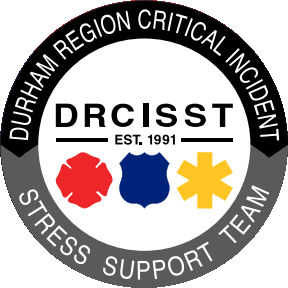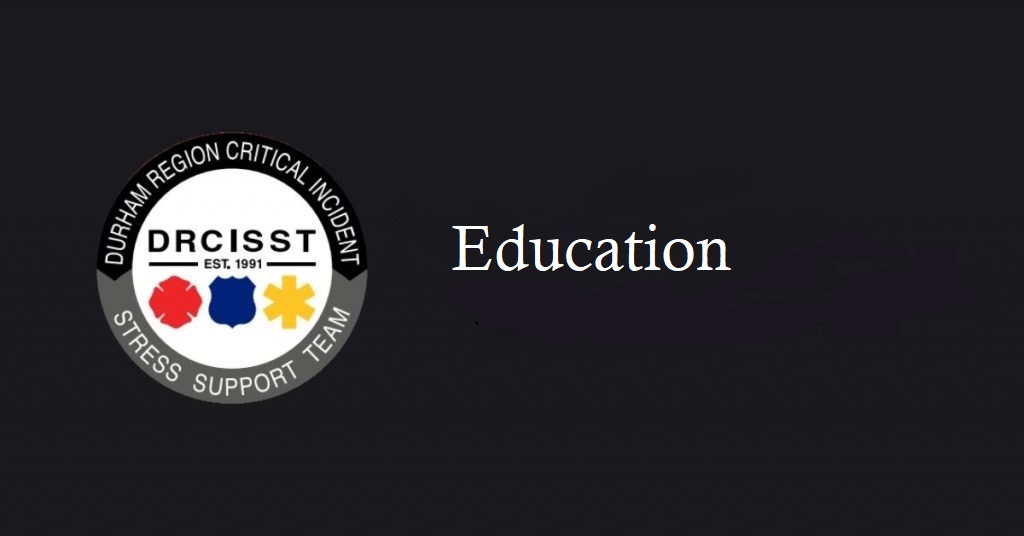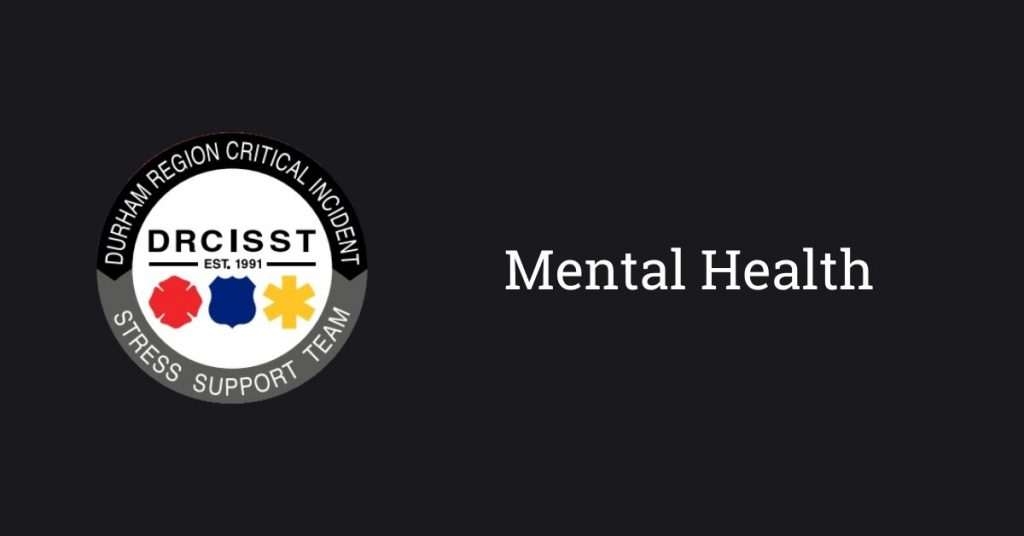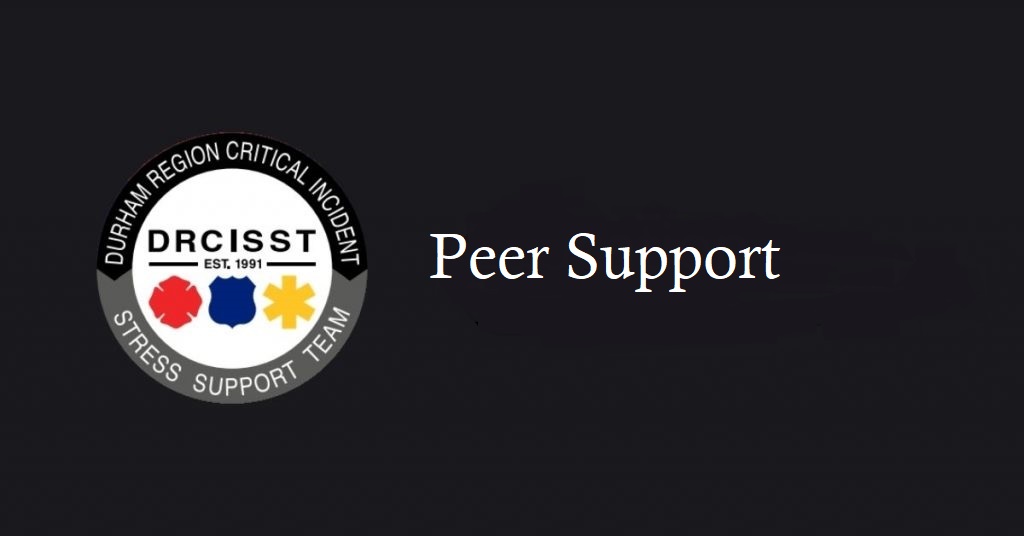For Emergency Services CISM Teams
Purpose
This guideline is to provide assistance to Critical Incident Stress Management (CISM) teams and local Emergency Services involved in or exposed to significant incidents that have the potential to cause CIS. Further, to coordinate the delivery of CISM resources during and after a significant incident that affects Emergency Service personnel engaged in the rescue, recovery or mitigation efforts of a “significant incident”. It is difficult to adequately define “significant incidents” however, for the purpose of this guideline, incidents like the 1998 Eastern Ontario ice storm, the September 1998 Swissair crash near Peggy’s Cove, NS, the September 11 World Trade Center attacks, the 2003 SARS outbreak, the 2003 blackout are examples of such events.
Background
Major events such as the Ice Storm or Swissair crash have brought to the attention of many that Critical Incident Stress Management is an element of emergency response. The CISM response should begin as early as possible and be managed appropriately, especially when the event is of a long duration.
In the province of Ontario, the primary responsibility for dealing with Community emergencies such as a tornado, flooding or transportation accidents rests with the local municipality as set out in the Emergency Management Act. Emergency Management Ontario (EMO), Ministry of public safety and security, is mandated to monitor declared municipal emergencies or impending situations in the province, and to assist municipalities with their response to the incident or event. In general terms, the province supports the community and, where required, coordinates response of provincial ministries/agencies to community emergencies.
Critical incident stress management (CISM) should be considered an essential element of emergency management. It is important for all emergency responders and public safety personnel to recognize the signs and symptoms of critical incident stress, so they are able to take appropriate actions to mitigate their effects. It is equally important for those emergency responders and public safety personnel in management roles to implement measures to help prevent critical incident stress amongst their workers.
The delivery of CISM resources/services at any incident relies on the effective management of five key areas
- Coordination/command – assessment of CISM needs of impacted personnel; developing a strategy and plan for CISM service delivery; implementing the plan; reviewing strategies and plans; liaise with agencies, organizations, governments affected/responding to the incident; and supervision and management of four other key areas.
- Operations – deployment/supervision of CISM services (location, timing, trained peers and MHP’s coordination, etc), supervise CISM operations, and determine resources needed.
- Administration/finance – record keeping, purchasing (supplies, accommodations, food, etc), invoicing, accounting, filing reports, making claims, follow-up, etc.
- Logistics – securing locations or equipment for operations, accommodations, service delivery, transportation, communications, etc.
- Planning – collecting, evaluating and disseminating CISM tactical information; preparing forecast for future needs; reacting to incidents/emergency demands and subsequent CISM demands, staff/resources, etc.
Initial engagement of CISM resources
It is anticipated that CISM team(s) at or near the incident will be the first CISM personnel to be aware of any major or significant event. A local CISM team is expected to initiate a response to the incident.
- The local team is expected to:
- Establish an operational contact point
- Appoint a CISM incident coordinator
- Make an assessment of the potential CISM response needed and to make calls for assistance as early as possible.
- Note: Don’t hesitate to call for help – it can always be canceled later. The local team will be responsible for the long-term CISM responsibility; get as much help as possible during the emergent and response phases of the incident.
- Provide services appropriate to the need and to the level possible
- Initial request for assistance can be directed to:
- Chair or secretary of the Ontario CISM advisory Council (Ontario CISM contact list)
- Neighboring CISM teams (Ontario CISM contact list)
- The International Critical Incident Stress Foundation (ICISF) hotline 410-313-2473
Major Emergency CISM response
The coordination of CISM responders can be facilitated at the local level or from a remote location, away from the incident, or at both.
The local coordinator’s role is to:
- Be the primary CISM contact for personnel involved in the incident rescue, recovery or mitigation
- Provide a strategy and action plan for CISM resource development
- Ensure that five key management areas (coordination/command, operations, planning, administration/finance and logistics) are being addressed.
The remote coordinator’s role is to:
- Support the local role
- Plan for CISM personnel acquisitions and deployment
- In conjunction with the local coordinator, ensure that five key management areas(coordination/command, operations, planning, administration/finance and logistics) are being addressed
- Assist in financial management if possible
CISM incident coordinator (local or near-site coordinator):
- Establish a CISM operations location that allows a CISM incident coordinator reasonable access to incident command staff, emergency operations Center, CISM responders etc.
- Note: This is the CISM staff work area, not an area for reactive service delivery
- Ensures CISM operations location has the tools to fulfill its mission (e.g., paper and pens/pencils, flipchart/markers, on phone access, two way radios, electrical power, heating/cooling, washrooms, etc) and is secure. – Team “fall out kit”
Note: you may have people staffing this location for several days. Consider cots, sleeping bags, refrigerator, microwave oven, etc. If EMO has assigned a provincial CISM coordinator consider contacting him or her for assistance.
- The CISM incident coordinator is to ensure that all CISM responders at the incident have adequate identification
- Advise the incident command staff, Emergency Control Group(s), etc. of your function, capabilities and limitations (i.e., CISM assessment, pre-deployment, briefings, on scene support, demobilization, defusing, etc.)
- Provide advice and assistance to Incident Commanders regarding:
- -ongoing stress management
- -shift rotations, work engagements
- -rest, nutrition, personal needs,(washing, showers, toilets, etc.)
- In conjunction with command staff/EOC., locate and set up areas to be used for reactive services
- Attend EOC debriefings, as required
- Consider contacting EMO area officer
- Ensure availability of appropriate clinical supervision for CISM personnel, as required
- Determine the staff level (peers and/or MHP) required to facilitate CISM services, and groups to be included
- Establish schedules for CISM personnel. You may require a 24/7 schedule for any or all of the CISM response. Recommended maximum incident contact time for CISM responders 4 to 7 days.
- Brief all incoming CISM personnel on the incident, CISM services being delivered, CISM staff at the incident and the CISM supervisory hierarchy
- Provide the opportunity for all departing CISM personnel to be debriefed
- Provide education sessions for partners of emergency services and EOC staff at conclusion of incident or released from all duties at incident
- Keep accurate and detailed records of services, contacts and other activities
- Provide for relief of CISM incident coordinator and ensure that coordinator and relief staff are not directly involved with the delivery of CISM services
Provincial CISM Coordinator
Note: This could also be a remote coordinator working some distance away from the incident or outside the affected area.
- Receive briefing from ECO manager and as soon as possible after appointment. CISM coordinator and operations manager will identify items that require immediate attention.
- Establish and maintain regular contact with local CISM coordinator or CISM team(s) deployed at the emergency.
- Maintain adequate and accurate records for duration of emergency.
- Contact local CISM team(s) involved in emergency or in effected area to determine their status and needs.
- Conduct an assessment of the emergency and/or affected area as required.
- Assist local CISM resources in a manner and to the extent possible.
- Be prepared to supply information on what critical incident stress is, how it can be mitigated, and contacts for trained CISM team(s). This information should be available to Emergency Services, EOC’s, etc. involved in the incident.
- Alert non-affected CISM team(s), as appropriate, to the emergency and their potential deployment. All alerted teams should be updated at least every 48 hours throughout the emergency, and will be informed of termination or stand down as soon as possible.
- Contact ICISF Hotline, as required.
- Provide for relief of provincial CISM coordinator and ensure that the coordinator and relief staff are not directly involved with the delivery of CISM services to the existing emergency.





